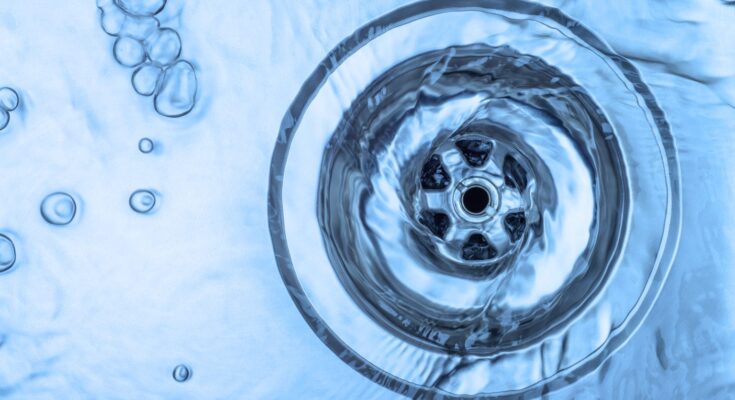Our drains are the silent workhorses of our homes, whisking away wastewater and keeping things sanitary. But just like any system, they have limitations. To avoid costly clogs and environmental damage, it’s crucial to understand what can be safely poured down the drain and what should find a different disposal method. This comprehensive guide will delve into the world of drain-worthy materials and common culprits that can lead to trouble.
Green Lights: What Gets the Downward Flow
Let’s start with the good news – things you can confidently send down the drain.
Liquids: Most liquids are safe for your drains, including water (obviously!), coffee (minus the grounds), tea, juice, milk, beer, wine, and even semi-liquid items like yogurt, pudding, and applesauce.
Dish Soap and Cleaning Solutions: Dish soap, laundry detergent, and other diluted cleaning solutions are formulated to break down grease and grime, making them suitable for the drain (though it’s always a good practice to check the label for specific disposal instructions).
Safe for Garbage Disposal: If you have a garbage disposal, it can handle certain food scraps. These include vegetable peelings (in moderation), cooked pasta and rice (in small amounts), eggshells, coffee grounds (in small amounts with plenty of water), and citrus peels (except for excessive quantities).
Remember: When dealing with any liquids or semi-solids, it’s always a good idea to err on the side of caution and use plenty of water to flush them down the drain.
Red Lights: Drain Enemies to Avoid
Now for the not-so-friendly items that can wreak havoc on your plumbing.
Grease and Oil: Grease and oil solidify as they cool, clinging to pipes and causing major clogs. Scrape or wipe away excess grease before washing dishes, and consider using a grease trap to catch any remnants before they enter the drain.
Coffee Grounds: While small amounts of coffee grounds can be handled by a garbage disposal with plenty of water, large quantities can clump together and form blockages. It’s best to compost coffee grounds or discard them in the trash.
Fibrous Foods: Fibrous vegetables like celery, artichokes, and corn husks can get tangled in your pipes and create clogs. It’s best to chop them finely before sending them down the drain or compost them instead.
Eggshells and Membranes: Eggshells, particularly the tough membranes, can also contribute to clogs. While some garbage disposals can handle them in small amounts, it’s safer to compost them.
Flour, Rice, and Pasta (in Large Quantities): These starchy foods expand in water and can easily obstruct your pipes. Scrape or dump excess quantities into the trash before rinsing your pot.
Golden Rule: When in doubt, throw it out! It’s better to be safe and dispose of questionable items in the trash than risk a costly plumbing problem.
Beyond the Kitchen Sink: Bathroom Drain Do’s and Don’ts
Bathroom drains have different considerations compared to the kitchen. Here’s what to keep in mind:
The Throne’s Domain: The toilet is designed for one thing – waste and toilet paper. Anything else, including feminine hygiene products, baby wipes, dental floss, cotton swabs, or medication, can cause blockages in your sewer system.
Hair Today, Gone Tomorrow (Not Down the Drain): Hair is a major culprit in bathroom drain clogs. Use a drain trap to catch loose strands and clean it regularly.
Unclogging the Mystery: Common Clog Culprits and Solutions
Even with the best intentions, clogs can happen. Here are some common culprits and DIY solutions you can try:
Grease Clogs: Boiling water can sometimes melt what can you pour down your drain minor grease blockages. For tougher clogs, a baking soda and vinegar mixture can be effective. However, for persistent clogs, it’s best to call a plumber.
Soap Scum Buildup: A mixture of vinegar and hot water can help break down soap scum buildup.
Safety Note: Always wear gloves and eye protection when using cleaning solutions or attempting to unclog drains.
Prevention is Key: Maintaining Healthy Drains
Taking preventative measures is the best way to avoid clogged drains. Here are some helpful tips:
Install Drain Traps: These handy devices catch debris before it enters the pipes. Empty and clean them regularly.
Regularly Clean Drains: Pour a mixture of baking soda and vinegar down your drains once a month to keep them clear and free-flowing.
Be Mindful of What You Flush: Stick to the “toilet paper only” rule in the bathroom.
Hazardous Waste Disposal: Remember, many household items like paint, motor oil, cleaning chemicals, and medications should never be poured down the drain. Improper disposal can harm the environment and public health. Check with your local waste disposal authority for designated drop-off locations for these materials.
Green Drain Cleaning: Natural Solutions for a Healthy Home
While chemical drain cleaners can be tempting for stubborn clogs, they can be harsh on your pipes and the environment. Here are some natural alternatives you can try:
The Baking Soda and Vinegar Powerhouse: This classic combination creates a fizzing reaction that can loosen mild clogs. Pour half a cup of baking soda down the drain, followed by a cup of vinegar. Let it sit for 15-30 minutes, then flush with hot water.
The Plunger’s Power: A good old-fashioned plunger can be surprisingly effective for dislodging clogs caused by hair, soap scum, or other debris.
The Boiling Water Option: For grease clogs in kitchen sinks, boiling water can sometimes melt the blockage. However, be cautious with this method, as very hot water can damage some pipes.
Remember: These natural methods may not work for all types of clogs. If you’re dealing with a persistent clog, it’s best to call a professional plumber.
Calling in the Cavalry: When to Hire a Plumber
While DIY solutions can work wonders, there are times when a professional plumber is the best course of action. Here are some signs it’s time to call in the cavalry:
Frequent Clogs: If you’re experiencing recurring clogs, it could indicate a deeper problem in your plumbing system that needs professional attention.
Slow Drainage: Drains that are slow to drain can be a sign of a partial clog or a larger issue with your pipes.
Strange Noises: Gurgling, bubbling, or other unusual noises emanating from your drains can indicate a blockage or a venting problem.
Leaks: Any leaks around your drains require immediate attention to prevent water damage.
Conclusion
By following these guidelines and what can you pour down your drain healthy drainage habits, you can keep your drains flowing freely and avoid costly plumbing problems. Remember, a little prevention goes a long way in protecting your home and the environment.



